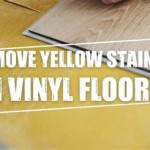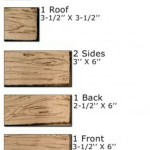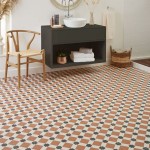Vintage Floor Tile Patterns: A Timeless Elegance
Vintage floor tile patterns evoke a sense of history and sophistication, offering a tangible link to past eras. These designs, often characterized by intricate details, bold colors, and geometric arrangements, remain a popular choice for homeowners seeking to add character and visual interest to their spaces. Exploring the history, types, and application of these patterns provides a comprehensive understanding of their enduring appeal.
The resurgence of interest in vintage design has fueled the demand for authentic and reproduction vintage floor tiles. This trend reflects a broader appreciation for craftsmanship, quality materials, and design aesthetics that prioritize longevity and personality. Understanding the nuances of vintage floor tile patterns allows individuals to make informed decisions when incorporating them into both restoration projects and new construction.
The Historical Context of Vintage Floor Tile Patterns
The use of patterned floor tiles dates back centuries, with examples found in ancient civilizations. However, the Victorian era (1837-1901) and the early 20th century witnessed a significant rise in the popularity of decorative floor tiles, particularly in residential and public spaces. This period coincided with advancements in manufacturing techniques, making tiles more accessible and affordable.
Geometric patterns were a hallmark of Victorian floor tiles, often featuring intricate arrangements of small, colorful tiles. These patterns were frequently used in hallways, entryways, kitchens, and bathrooms, adding a touch of elegance and visual interest to these functional spaces. The use of encaustic tiles, which incorporate colored clay into the body of the tile, allowed for durable and intricate designs that would withstand heavy foot traffic.
The Art Deco movement (1920s-1930s) introduced a new aesthetic to floor tile patterns. Characterized by streamlined geometric shapes, bold colors, and luxurious materials, Art Deco floor tiles reflected the era's embrace of modernity and glamour. These patterns often incorporated motifs such as chevrons, zigzags, and stylized floral designs, adding a touch of sophistication to interiors.
Mid-century modern design (1940s-1960s) saw a shift towards simpler, less ornate floor tile patterns. While geometric designs remained popular, colors became more muted and patterns less intricate. Terrazzo, a composite material consisting of marble chips set in cement, gained popularity during this period, offering a durable and visually appealing flooring option.
Types of Vintage Floor Tile Patterns
A wide array of vintage floor tile patterns exists, each with its unique characteristics and historical context. Understanding the different types of patterns allows for informed decision-making when selecting tiles for a specific project.
Geometric Patterns: This category encompasses a wide range of designs, including checkerboard patterns, herringbone patterns, and complex arrangements of squares, triangles, and other geometric shapes. Checkerboard patterns, consisting of alternating squares of contrasting colors, are a classic and versatile choice that can complement a variety of architectural styles. Herringbone patterns, created by arranging rectangular tiles in a staggered, zigzagging pattern, add a touch of dynamism and visual interest to floors. More complex geometric patterns can create intricate and visually stunning designs, often requiring careful planning and installation.
Encaustic Tiles: Encaustic tiles are distinguished by their intricate designs, which are created by inlaying different colors of clay into the body of the tile. This process results in a durable and long-lasting design that will not fade or wear off over time. Encaustic tiles were particularly popular during the Victorian era and are often found in historical buildings. Reproduction encaustic tiles are available today, offering a way to recreate the look of antique tiles in new construction.
Mosaic Tiles: Mosaic tiles consist of small pieces of tile, glass, or stone arranged to create a decorative pattern. Mosaic tiles have been used for centuries and are found in a variety of cultures. Victorian mosaic tiles often featured intricate floral or geometric designs and were used to create elaborate floor patterns. The small size of the individual tiles allows for a high degree of detail and customization.
Terrazzo: Terrazzo is a composite material consisting of marble chips set in cement. Terrazzo floors are durable, visually appealing, and relatively easy to maintain. Terrazzo was particularly popular during the mid-century modern era and is often found in commercial buildings and residences. Terrazzo floors can be customized by varying the size, color, and type of marble chips used.
Art Deco Patterns: Art Deco floor tiles are characterized by streamlined geometric shapes, bold colors, and luxurious materials. These patterns often incorporate motifs such as chevrons, zigzags, and stylized floral designs. Art Deco floor tiles were popular during the 1920s and 1930s and reflect the era's embrace of modernity and glamour.
Applications and Considerations for Using Vintage Floor Tile Patterns
Vintage floor tile patterns can be incorporated into a variety of spaces, both residential and commercial. The key to successful implementation is to carefully consider the architectural style of the building, the overall design aesthetic, and the intended use of the space.
Restoration Projects: When restoring a historical building, the use of authentic vintage floor tiles is often desirable. Sourcing antique tiles can be challenging, but architectural salvage companies and online marketplaces can be valuable resources. Alternatively, reproduction vintage floor tiles can be used to recreate the look of antique tiles while ensuring consistent quality and availability. Careful attention should be paid to matching the original pattern, color, and texture of the existing tiles.
New Construction: Vintage floor tile patterns can also be incorporated into new construction to add character and visual interest. When using vintage-inspired tiles in a new building, it is important to consider the overall design aesthetic. Vintage patterns can be used to create a focal point in a room or to complement other design elements. The tiles should be selected to harmonize with the architectural style of the building and the intended use of the space.
Material Selection: The choice of material is an important consideration when selecting vintage floor tiles. Ceramic, porcelain, and natural stone are all common materials used for floor tiles. Ceramic tiles are a cost-effective option that is relatively easy to maintain. Porcelain tiles are more durable and water-resistant than ceramic tiles, making them a good choice for bathrooms and kitchens. Natural stone tiles, such as marble and granite, offer a luxurious look and feel but require more maintenance.
Installation Considerations: The installation of vintage floor tiles requires careful planning and execution. The subfloor must be level and properly prepared to ensure a stable and even surface for the tiles. The tiles should be laid out carefully to ensure a consistent pattern and avoid any gaps or misalignments. Grout selection is also important, as the color and type of grout can affect the overall look of the floor. It is recommended to hire a professional tile installer with experience in working with vintage or vintage-inspired tiles.
Maintenance: Vintage floor tiles require regular maintenance to keep them looking their best. Sweeping or vacuuming regularly will remove dirt and debris that can scratch or damage the surface of the tiles. Cleaning with a mild detergent and water is usually sufficient for removing stains and spills. Harsh chemicals and abrasive cleaners should be avoided, as they can damage the surface of the tiles. Sealing the tiles can help to protect them from moisture and stains. The specific maintenance requirements will depend on the type of material used for the tiles.
Color Palette: When selecting vintage floor tile patterns, considering the color palette is crucial. Authentic vintage tiles often feature specific color combinations that are characteristic of the era in which they were produced. For example, Victorian tiles often incorporate rich, saturated colors such as deep reds, greens, and blues. Art Deco tiles may feature bold, contrasting colors such as black and white, gold and silver, or vibrant shades of orange and turquoise. Mid-century modern tiles often feature more muted and earthy tones such as browns, grays, and greens. When selecting colors for reproduction vintage tiles, it is important to consider the historical context and choose colors that are appropriate for the desired aesthetic.
Pattern Scale: The scale of the pattern should be considered in relation to the size of the room. Small, intricate patterns can be overwhelming in large spaces, while large, bold patterns may be too imposing in small spaces. It is important to choose a pattern that is proportionate to the size of the room and that complements the other design elements. In small rooms, simpler patterns with smaller-scale motifs may be more appropriate. In larger rooms, more complex patterns with larger-scale motifs can be used to create a dramatic effect.
Ultimately, the selection and implementation of vintage floor tile patterns should be guided by a clear understanding of the historical context, the different types of patterns available, and the specific considerations for each project. With careful planning and execution, these timeless designs can add a touch of elegance, character, and visual interest to any space.

Budget Basics Our Favorite Vintage Mosaic Floor Tiles For The Bathroom Tile Flooring

Fs Porto Iria Vintage Floor Tiles By Peronda Collection

Vintage Historic Tile Gallery Mid Century Arts Crafts 1890s 1950s

112 Patterns Of Mosaic Floor Tile In Amazing Colors Friederichsen Wall Catalog 1929 Retro Renovation Flooring Patterned Tiles

Retro Flooring Ideas 12 To Inspire Your Vintage Style Home Inc

Avente Tile Blog Tagged Vintage Designs

23 Vintage Tile Design Ideas Sebring Build Bathroom Floor

Retro Floor Patterns To Recreate With Vct Vintage Trailer Talk

112 Patterns Of Mosaic Floor Tile In Amazing Colors Friederichsen Wall Catalog 1929 Retro Renovation

6 Awesome Historic Floor Tile Patterns The Craftsman Blog
Related Posts








